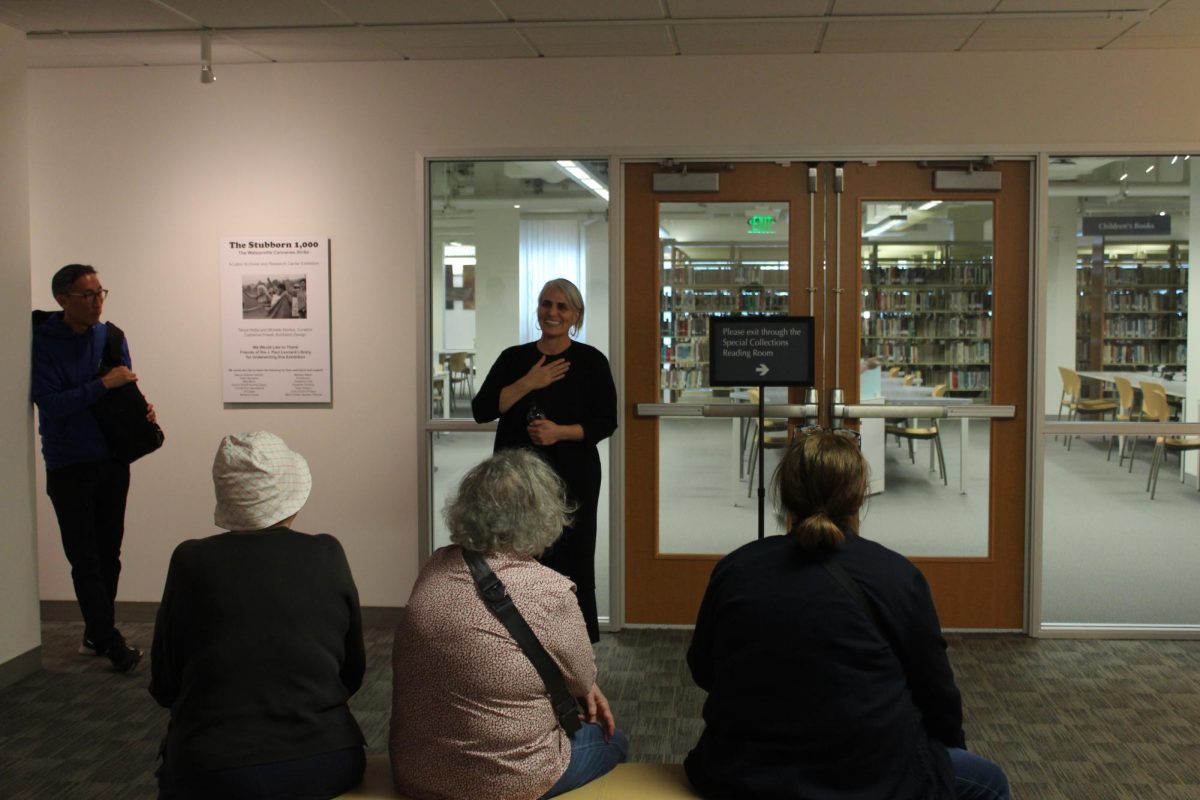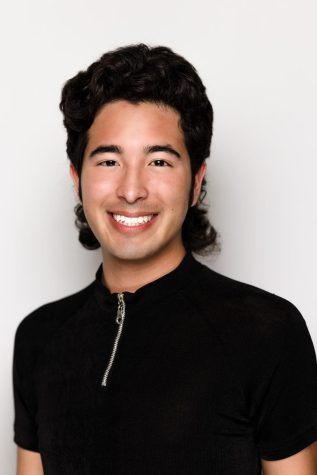Jonathan H. X. Lee was just a high school student when the 1996 Proposition 209 initiative first went into effect. Now a tenured Asian American Studies professor at SF State, he is sought after by students seeking his assistance in building portfolios impressive enough for universities such as Harvard and Yale.
Lee recalled the initiative that “prohibits the state from discriminating against, or granting preferential treatment to, any individual or group on the basis of race, sex, color, ethnicity, or national origin in the operation of public employment, public education, or public contracting” as a form of backlash against affirmative action, which he said was a product of the civil rights movement.
“When Prop. 209 passed, you know, it was during the same time [the state] passed Prop. 187. Those were both kind of propositions that were anti-communities of color,” he said. “And then Prop. 209, in particular, you know, we saw the impact of Prop. 209 10 years after Prop. 209 passed. It didn’t diversify the Cal States or CSU campus. But what you saw instead was the decline of African American enrollment at the UCs and CSUs.”
This November, voters across California will have the opportunity to decide whether or not to restore affirmative action through California Assembly Constitutional Amendment 5, otherwise known as Proposition 16. A majority vote by Californians on Proposition 16 would reverse Proposition 209.
If Proposition 16 passes, it would be up to the University of California (UC) and Cal State University (CSU) to create their own policies around affirmative action.
Lee, who has been with SF State for 11 years, is a product of the California public university system. He graduated from UC Riverside with three bachelor’s degrees in Religious Studies, Sociology and Ethnic Studies. Lee also has a master’s degree from the Theological Union & Pacific Lutheran Theological Seminary and a doctoral degree at UC Santa Barbara, both in Religious Studies. He said that Proposition 16 is a step in the right direction for the state to make and clarified that the amendment is not about taking opportunities away from prospective white or Asian students. Lee contends it is “about correcting a historical legacy” and “undoing institutional and systemic racism.”
Following the implementation of Proposition 209 in 1998, the CSU saw two-thirds of the drop in minority enrollment across the state, and the UC system witnessed a decline in underrepresented groups— Black, Latino, Pacific Islander and American Indian— to 15%.

According to President Janet Napolitano, the highest enrollment of underrepresented groups on UC campuses occurred in 2016 when the system recorded a rate of 37%.
“I have so many discussions with progressive, liberal white friends— and even family members— who were on the fence or even lightly opposed to affirmative action, because I think they think that it excluded their white kids,” Lee said. “That’s the result of, I think, very clever and very successful kind of messaging from the anti-affirmative action group, to say that affirmative action programs are reverse racism, you know, which needs to be debunked.”
Proposition 16 has Californians split. The amendment was voted largely along party lines, with only two Republican lawmakers— one in the state assembly and one in the senate— voting in favor of it. While the UC Board of Regents and CSU support the amendment, Proposition 16 has also garnered opposition from a sizeable Asian-American population; an online Change.org petition currently has over 135,000 signatures, and #AsianStudentsMatter has gained traction across social media.
The students Lee works with also apply for supplementary college-prep courses and programs that he says can cost up to $50,000 a year. Lee added that many of these students apply for these programs in their sophomore year of high school and are “so exclusive that on their webpage, they’ll even say something like, ‘And all of our students will get into the UC, so we don’t even count [them].’”
“Because the families have resources to send them through the pipeline so that they can do well, they’re going to do well in their life, period, because they have all the cultural resources and economic resources that they need. So my focus is not necessarily on them,” Lee said. “My focus is on the students who are not graduating high school, right, and what we need to do in order to get them to graduate high school and improve resources [at] their schools and within their community, so that they can make it to the university level and graduate from college. Because one thing is for sure, having a college degree really is an equalizer for many Americans.”
Lee attributed part of the misinformation to the “model minority” stereotype that is commonly associated with Asian-Americans. The idea of the model minority originated from UC Berkeley sociology professor William Petersen, who compared post-World-War-II Japanese-Americans to African-Americans and their plight. Petersen concluded that Japanese-American success following the war was a result of “good culture” and a valuing of education, which he claimed was nonexistent in Black communities. To him, this meant that America was “no longer racist” deeming programs such as affirmative action futile in a merit-based society.
“He called it a pathology. Cultural pathology, because they’re not willing to work hard, you know what I mean?” Lee said. “They’re not willing to invest in their kids and in education. And ignoring centuries of racism, centuries of anti-black laws, Jim Crow.”
Petersen’s work “pitted Asian-Americans against other historically oppressed communities of color: Black, Indigenous, Latinos,” Lee said. He speculated that many of the Asian-American proponents against the amendment are conservative, contemporary “first-wave” Asian immigrants: Chinese-, Japanese- and Korean-Americans who had a head start over “second-wave” Asian immigrants: typically, Pacific Islanders and Cambodian-, Vietnamese-, and Laotian-Americans.
First-wave Asian immigrants and refugees of the Vietnam War generally received access to more resources as the byproduct of American guilt following the Vietnam War. Following the ‘80s, however, Asian-Americans experienced compassion fatigue, which was exacerbated by the economic decline of the Rust Belt. This drove many of these Asian-Americans into self-employment in the service sector, such as nail salons and restaurants.
Lee explained that low-income, typically Southeast Asian-immigrants, are forgotten when discussing Asian-American issues. He referenced the Hmong, whose childhood poverty rate in Burbank is around 40%. He said that the umbrella term “Asian-American” typically forgets Southeast Asian-Americans, who face challenges that uniquely differ from East Asian-Americans.
Lee said that despite anxieties within Asian-American circles, the fear is understandable. Last year a nonprofit, Students For Fair Admissions filed a lawsuit against Harvard, alleging that the school “violates Title VI [of the Civil Rights Act] by intentionally discriminating against Asian Americans, using racial balancing, failing to use race merely as a ‘plus’ factor in admissions decisions, failing to use race merely to fill the last ‘few places’ in the incoming freshman class, using race where there are available and workable race-neutral alternatives, and using race as a factor in admissions.”
These claims came with the notion that Asian-American applicants are held to a higher standard than their white or fellow minority counterparts. Discourse remained after a federal judge handling the case rejected them.
“My take on that is, these kids are going to get into a good university, and they’re going to be successful in their life. They might not get into Harvard, but they might get into Yale or Brown or UC Berkeley. These [are] kids that, you know, that are doing really well in high school, the Asian American kids who are doing really well in school,” Lee said.
At SF State, the changes Proposition 16 may bring if passed by voters in November could take years to see. However, that’s only if the amendment doesn’t get overturned. Lee said that while affirmative action is a step in the right direction, colleges and universities need to go further, saying white women benefit the most from it.
“One example for you, if you want to really force people to think about this, is if you look at the university administration right now at SF State,” Lee said. “If you look at it right now, who’s in top positions at the administration? I mean, it’s all white women: white woman president, white woman provost, white woman dean of faculty affair, white woman dean of graduate and undergraduate admissions. Right?”
This follows a letter published on June 25 by the California Faculty Association (CFA), charging the administration with a series of anti-Black and minority biases. The CFA, representing over 29,000 faculty members across the CSU, issued a statement in May supporting Proposition 16, stating that Proposition 209 “reduces the graduation rates of students of color and, in turn, contributes to the diminution of the ‘pipeline’ of candidates of color for faculty positions.”
“The bigger picture is, how can we uplift the other historically marginalized community, and how can we disaggregate the Asian-American umbrella to really address the specific Asian-American communities?” Lee said. “Otherwise, I think it’s going to be kind of status quo.”










K • Oct 30, 2020 at 1:20 pm
Pacific Islanders are NOT a part of a “second wave of Asian immigrants” because Pacific Islanders are NOT Asian!. I do not know if this was a flagrant error made by Professor Lee or the author, Mr. Ramirez, but i need to remind you that Pacific Islanders are the indigenous/native people to Oceania and have been living in their locations for thousands of years. (Thousands of years before the arrival of Asians who typically came to work as laborers in the 19th century). In Guam, Samoa, and Hawaii which are now “possessions” of the U.S there were people already living there for thousands of years PRIOR to colonization, so to call the indigenous people of those locations Asian immigrants is even more offensive because they are 1. NOT ASIAN and 2. NOT IMMIGRANTS! Would you refer to the Lakota, the Inuits or any other Native American tribes as immigrants or refer to them as Asian immigrants? (did you know Hawaiians a.k.a Native Hawaiians are divided by Blood quantum too!) Also geographically some of these archipelagos are located thousands of miles from the continent of Asia and are much closer to North America!
Not only is there a significant difference in geography, culture and phenotype, but history as well. Pacific Islander history is very similar to Native American history and includes genocide (resulting in SEVERE population decline and loss of language/ culture), colonialism by Whites AND Asians (West Papua) as well as settler colonialism from Asians (Hawaii is an excellent example. People in positions of power in Hawaii are predominantly White or Asian. While Pacific islanders and especially Hawaiians/Native Hawaiians are pushed to the bottom despite the fact that it is their land!), mass incarceration, also land theft and dispossession etc..
This why I cannot stand the silly, stupid and erroneous AAPI, API or Asian/ Pacific islander or any other similar label.
For more information on this topic I would suggest the following reading material:
‘Asian Settler Colonialism: From Local Governance to the Habits of Everyday Life in Hawaii’ by Jonathan Y. Okumura and Candace Fujikane, 2008.
‘Which of These Things is Not like the Other: Hawaiians and Other Pacific Islanders Are Not Asian Americans, and All Pacific Islanders are Not Hawaiian’. Written by University of Cornell professor Lisa Kahaleole Hall and published in the journal ‘American Quarterly’ in 2015.
‘(In)visibility in numbers: Native Hawaiian and Pacific Islander College Students and Their Perspectives on Asian American Pacific Islander Culture Centers’ dissertation by John Bacolores an Asian American (he refers to himself as Pilipinx), University of Southern California, 2019.
In regard to the subject of the Article: Affirmative Action, I do agree with Professor Lee that it is White Women that Benefit the most from it! If anything that is what the Asians and everyone else should be questioning.
Edwin Choi • Jul 13, 2020 at 9:11 pm
Asian Americans who are for racial equality and against Prop 16 know that when schools like Harvard use race-based admissions, Asian students are held to higher standards and have far lower admission rates than even equivalent white students. Interviewers who meet with Asian Americans applicants rate them highly, but in the office, shenanigans like “you have bad personalities” are used to balance us out.
https://www.economist.com/united-states/2018/06/23/a-lawsuit-reveals-how-peculiar-harvards-definition-of-merit-is
https://www.economist.com/sites/default/files/images/print-edition/20180623_USC932_0.png
Race-based admission preferences are institutional, systemic discrimination against Asian Americans. Efforts to “disaggregate” and discriminate against Asians is not going to work. We will all mark “Decline to State” in the race box. You will not oppress us. It’s no longer acceptable to disaggregate Jews out of “white”, and thus anti-semitism has decreased.
We don’t have “bad personalities” or have “White adjacent privilege”. We were excluded, intimidated, and suffered just as much from white supremacy as other groups, but now a small elite is attempting to rebalance college classes against us.
Tell me, when UC Berkeley is 42% Asian vs. 15% in the state, and even white Californians are a “under-represented minority” compared to Asians, who is going to bear the brunt of this?
Don’t forget, Proposition 209 resulted in dramatic INCREASES in graduation rates: https://www.ocregister.com/2020/07/11/aca5-will-bring-discrimination-in-the-name-of-equality-michelle-steel/
Professor Lee is telling us that it’s OK for Asian students to be sent to UC Berkeley but not Harvard, that Asian students must take a sacrifice because too many other students who checked the “Asian” box get penalized. Is Edwin Cutler better than Edwin Choi better than Ji Suk Choi on the application box?
Professor Lee spreads more lies and stereotypes about these $50K test prep programs. LOL, how many kids growing up in working class Koreatown neighborhoods had these?